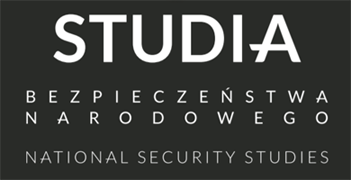REVIEW PAPER
PROTECTION OF CIVIL AVIATION AS AN ELEMENT OF STATE SECURITY
1
Wojskowa Akademia Techniczna im. Jarosława Dąbrowskiego w Warszawie
Publication date: 2012-12-02
SBN 2012;3(1): 105-122
KEYWORDS
ABSTRACT
Civil aviation security is not an issue commonly discussed at conferences or symposia in the field of state security. This topic is only discussed as part of industry events related to civil aviation. However, it is of fundamental importance for ensuring the security of all citizens and is of key importance for the security of the state. Due to the adequate protection of civil aviation, the existing terrorist threat or threats such as organized crime, the spread of infectious diseases, human trafficking and even financial fraud are clearly reduced. Civil aviation security is regulated in detail in legal regulations, both international and domestic. It is also documented within the European Union. In Poland, however, it is not mentioned in strategic documents in the field of state security, as is the case in other countries. This situation, although it seems to be acceptable today, should be changed in the future due to the dynamic development of air transport.
REFERENCES (19)
1.
Annex 17 to the Convention on International Civil Aviation, Security. Safeguarding International Civil Aviation Against Acts of Unlawful Interference, Eight Edition, April 2006,ICAO.
2.
C. Boynton, US airlines carried 1,4%more passengers year over year in April, August1, 2011, http://atwonline.com/airline-f....
3.
Communication from the Commission to the European Parliament and the Council,Overview of information management in the area of freedom, security and justice, Brussels, 20.7.2010, COM(2010)385 fnal.
5.
S. Koziej, Bezpieczeństwo: istota, podstawowe kategorie i historyczna ewolucja, „Bezpieczeństwo Narodowe”, II – 2011/18.
6.
Manuel de sûreté pour la protection de l’aviation civile contre les actes d’intervention illicite, Sixième édition – 2002, Doc 8973.
7.
B. Nowak, Akty terroryzmu w lotnictwie cywilnym a tokijsko-hasko-montrealski systemmiędzynarodowego lotniczego prawa karnego, „Studia Europejskie” 3/2003.
8.
Rozporządzenie Parlamentu Europejskiego i Rady (WE) nr 300/2008 z dnia 11 marca 2008 r. w sprawie wspólnych zasad w dziedzinie ochrony lotnictwa cywilnego i uchylającerozporządzenie (WE) nr 2320/2002, DzU L 97 z 9.4.2008.
9.
Rozporządzenie Rady Ministrów z dnia 19 czerwca 2007 r. w sprawie Krajowego ProgramuOchrony Lotnictwa Cywilnego realizującego zasady ochrony lotnictwa (DzU 2007 Nr 116Poz. 803 z późniejszymi zmianami).
11.
A. Stefańska, Rekordowa liczba podróżnych na polskich lotniskach, „Rzeczpospolita”,13.01.2012.
14.
Te EU Regulatory Framework Applicable to Civil Aviation Security, Note 2011, IP/B/TRAN/NT/2011-1, June 2011, http://www.europarl.europa.eu/....
17.
Universal Security Audit Programme, Analysis of Audit Results. Reporting Period January 2008 to December 2010, Tird Edition – 2011, International Civil Aviation Organization.
18.
Ustawa z dnia 3 lipca 2002 r. prawo lotnicze (DzU 2002 Nr 112 Poz. 1112 z późniejszymizmianami).
19.
R. Zięba, J. Zając, Budowa zintegrowanego systemu bezpieczeństwa narodowego Polski.Ekspertyza, Warszawa, październik 2010.
We process personal data collected when visiting the website. The function of obtaining information about users and their behavior is carried out by voluntarily entered information in forms and saving cookies in end devices. Data, including cookies, are used to provide services, improve the user experience and to analyze the traffic in accordance with the Privacy policy. Data are also collected and processed by Google Analytics tool (more).
You can change cookies settings in your browser. Restricted use of cookies in the browser configuration may affect some functionalities of the website.
You can change cookies settings in your browser. Restricted use of cookies in the browser configuration may affect some functionalities of the website.


